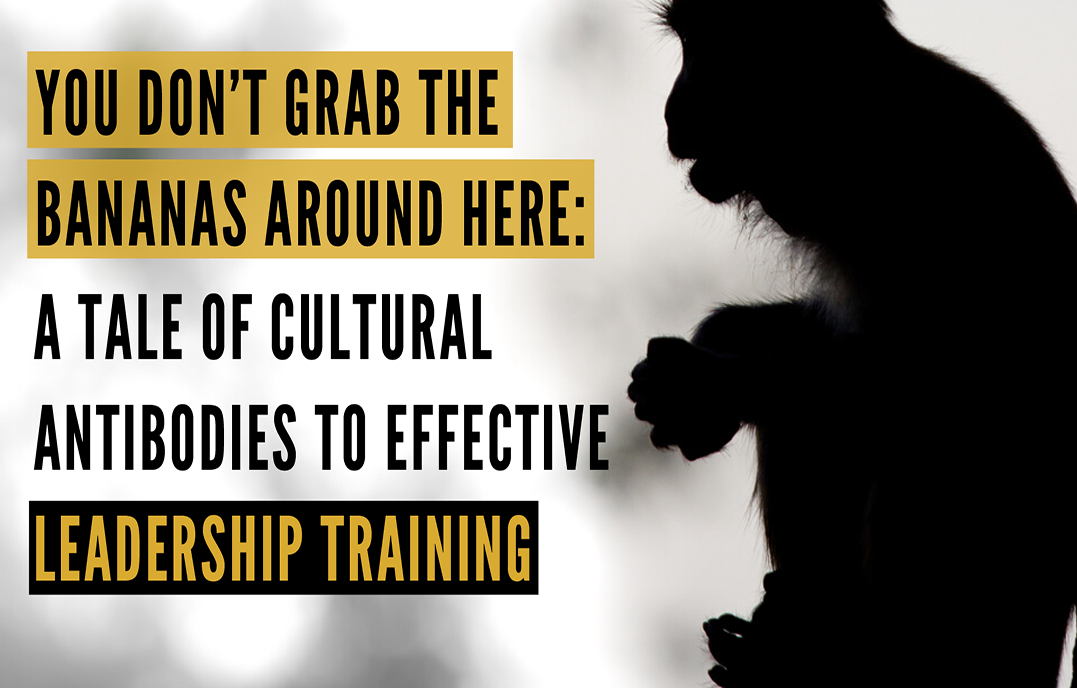Can you relate to this story?
Four monkeys are sitting in a cage staring at a bunch of bananas accessible only by a ladder hanging from the roof. Whenever the monkeys try to climb the ladder to reach the bananas, a blast of cold water blocks them. After a few days, realizing there’s no point in trying to get the fruit, the monkeys give up. Later, some humans remove the water hose and replace one of the original monkeys with a new one. On seeing the bananas, the new monkey starts up the steps, but the other monkeys pull it down. The new monkey is confused, looks around, and tries repeatedly to scale the ladder, only to be repeatedly pulled back. Finally, the new monkey accepts the group code of conduct and abides by the unwritten rule: “you don’t grab the bananas around here.”
This management fable was popularized in the book Competing For The Future by Gary Hamel and C. K. Prahalad. I share it because it illustrates what happens when culture trumps common sense. If you’re planning to roll out training at any level in the workplace this year, keep this fable in mind. Will participants come out of the training committed to change only to be rejected by cultural antibodies?
Research published in the Harvard Business Review shows that learning organizations put three things into place before rolling out training efforts:
1) The training is highly visible and championed by senior leaders
2) Conditions are created for learners to apply what they’ve studied
3) Systems are put in place that help sustain the learning
If you want your organization to benefit from learning and growth, take time to identify the unwritten cultural barriers to change. Is the resistance coming from what’s often referred to as “the frozen middle”—a change-resistant layer of middle managers? Is the resistance looking back at you in the mirror? Unfortunately, too many leaders want transformation to happen at unrealistic speeds, with minimal effort, and everywhere but within themselves.
Cultural norms ingrained by past management practices remain ingrained far beyond the existence of the practices that formed them, even when new training is introduced. Don’t pour money into training year after year to trigger organizational change without creating the conditions that challenge assumptions, embrace new ideas, and provide the fertile soil for the seeds of training to grow.
Question: What conditions do you put in place to make learning and growth “stick”?
Driven by the premise that excellence is the result of aligning people, purpose and performance, Center for Executive Excellence facilitates training in leading self, leading teams and leading organizations. To learn more, subscribe to receive CEE News!




